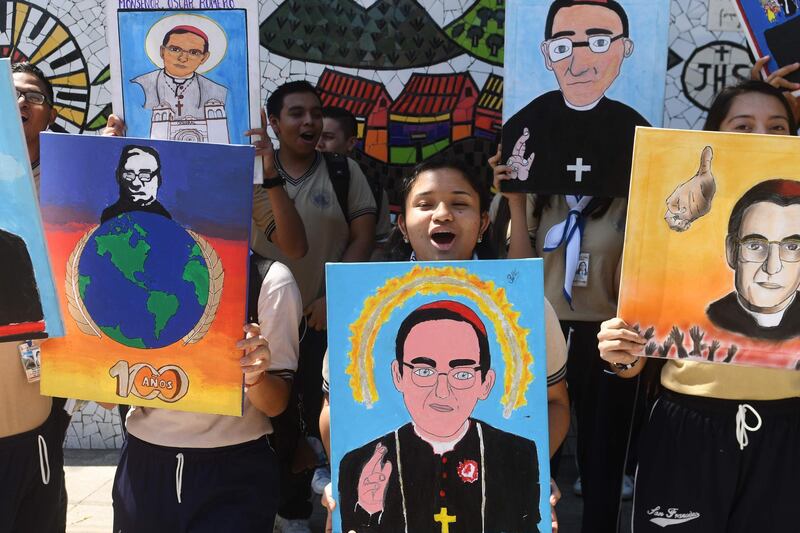Pope Francis has cleared the way for archbishop Oscar Romero to be made a saint, declaring that the churchman murdered by El Salvador’s right-wing death squads for standing up for the poor and oppressed should be a model for today’s church.
Francis signed a decree confirming a miracle attributed to archbishop Romero’s intercession on Tuesday, the same day he approved a miracle for another important figure for the 20th century Catholic church, Pope Paul VI, the Vatican said on Wednesday.
No date was set for either canonisation. Vatican officials have previously said Paul VI would likely be canonised in October, during a meeting of bishops.
The Vatican official who spearheaded Romero’s sainthood cause, archbishop Vincenzo Paglia, said he hoped the two would be declared saints together in October, saying a joint canonisation would give Catholics a “burst” of energy and example of the need to live one’s life for others.
“I’m in a hurry because there’s an urgent need to change the world,” archbishop Paglia told The Associated Press.
Another option would be to canonise Romero closer to home, such as when Pope Francis travels to Panama in January for World Youth Day. The big Catholic youth rally will unite tens of thousands of young Catholics from across Central and South America, where Romero is considered a hero.
The archbishop was gunned down by right-wing death squads on March 24, 1980, as he celebrated mass in a hospital chapel. The country’s military dictatorship had vehemently opposed his preaching against the army’s repression of the poor at the start of the country’s 1980-1992 civil war.
News of his pending canonisation was met with celebration in San Salvador, where President Salvador Sanchez Ceren tweeted that Pope Francis' decision "fills us with immense joy."
Cardinal Gregorio Rosa Chavez, a close associate of the archbishop, called it “an answer from God to the outcry of a people who have suffered so much.”
Archbishop Paglia said that his predecessor's example of paying with his life for the poorest of the poor was particularly needed today, "in a world full of individualism and oppression, where inequality grows rather than diminishes."
Romero biographer Roberto Morozzo della Rocca, who collaborated with archbishop Paglia on the saint-making case, said Mr Romero’s witness in opposing violence would resonate particularly in Latin America, “where violence by youth gangs has brought enormous suffering and created a true nightmare for the population.”
Pope Benedict XVI unblocked the stalled sainthood case in December of 2012, and Pope Francis pushed it through, declaring him a martyr for the faith in 2015.
The case had been held up for years by the Vatican, primarily due to opposition from conservative Latin American churchmen who feared Mr Romero’s perceived association with liberation theology would embolden the movement that holds that Jesus’ teachings require followers to fight for social and economic justice.
St John Paul II’s conservative Vatican had launched a crackdown on liberation theology, and the cause languished in the Vatican’s doctrine office while theologians studied his writings to ensure they were doctrinally sound. They were, and both archbishop Romero and theologians associated with the movement have been rehabilitated under the current pope’s papacy.
“It has been a long, tortuous journey, full of obstacles and opposition,” Mr Paglia said. “But it has finally reached its conclusion.”






